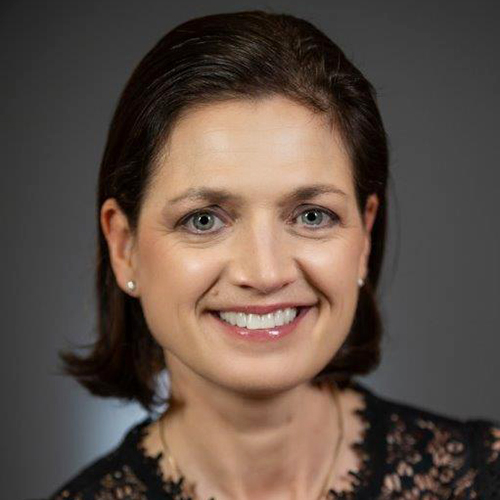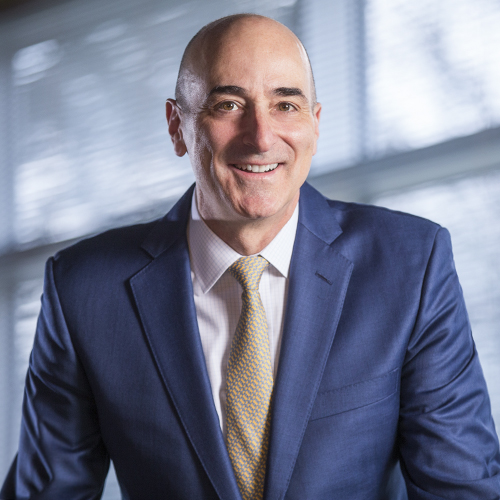A constantly evolving world like ours requires perpetual innovation. Inventors work regularly to produce cutting-edge solutions to problems, test them for effectiveness, and introduce them to the public to create a new normal. In the medical technology field, the best inventions can be valuable, lifesaving resources. But as new technologies flood the market, the possibility of others co-opting the technology and using it as their own becomes an ever-greater possibility. White & Case, LLP’s intellectual property partner Chuck Larsen works tirelessly to protect his medtech clients from such theft.
At White & Case, Larsen ensures that groundbreaking medical technologies are protected and allowed to flourish. Each case centers on the design or function of a product with clinical significance, and his aim is to protect each product’s intellectual property to improve its opportunity to benefit patients. Because he is a dual-qualified lawyer, he deals with these types of cases internationally and domestically, representing his clients in the United States and in Europe and tailoring his strategies transatlantically to achieve global protection for his clients’ technology.

That background is a bit unusual, as IP approaches are traditionally very territorial, with US lawyers focusing on US strategies, and lawyers outside of the US focusing on their respective jurisdictions. But with his transatlantic qualifications and experience, Larsen bridges that gap.
“I approach my work from a global perspective to help technology develop in its early stages,” he says. “When I file a patent application, I first have to consider whether the idea is a subject worth protecting, meaning it has to be a new and not obvious solution. Then, I must be mindful about which body of law I am submitting an application to in order to determine if a particular technology is innovative or traditional.”
That approach can be rather complex in a transatlantic medtech strategy because the law and procedure in the US and Europe differ dramatically. Take for example the area of “patentable subject matter” as it applies to in vitro diagnostics. This legal principle is a threshold question of whether an invention is sufficiently technical to merit even being adjudicated for patenting—well before assessing whether the invention is new. In the world of medical diagnostics, the US and Europe have fundamentally opposed approaches to that question the U.S. applies a legal standard based on evolving Supreme Court law, whereas the European regimes are largely governed by a statute called the European Patent Convention.
The complexities of medtech IP strategy are often seen in litigation. In the medtech area, when highly relevant technologies are developed, they often face significant patent litigation. Well-known examples include stents, pacemakers, orthopedic implants, blood sensors, spinal stimulation, and blood pumps. The goal of Larsen’s work is to help clients navigate that almost inevitable “clash between patents” and technology. He aims to help clients protect their ideas without infringing someone else’s work, while protecting his clients’ rights in their own innovations.
When patent clashes occur, however, he gladly accepts the challenge. Patent disputes are often started in patent office litigation in the U.S. and Europe. Chuck routinely practices in both venues, termed IPR proceedings (in the U.S.) and European oppositions (in Europe). These cases require him to advocate for clients in real-time, meaning he must be able to adequately defend a position as the argument unfolds inside the courthouse. According to Larsen, successfully handling disputes in those types of intellectual property cases requires a combination of motivation and preparedness.
“There is no substitute for preparation,” Larsen says. “If you really know the prior art and the technology involved, and you love what you do, you can be successful. You cannot undervalue motivation or preparedness. Ultimately, I dig deep to understand my clients’ technology. And the better I am at that, the better I can advise them on how to navigate their problems no matter how much innovation the industry is seeing.”
Larsen handles cases on many different cutting-edge technologies. In addition to medical device hardware and in vitro diagnostics, he represents clients in the adaptation of artificial intelligence and machine learning as it relates to their use in organizing and deploying therapeutics for the human body.
Whether that application involves determining drug dosage or configuring the operating parameters of a medical device, innovative AI technology has the potential to greatly improve the diagnosis and treatment of disease. In cases that involve invasive measures, for instance, machines can use sensors to monitor the patient’s response to therapy and rewrite instructions for the device to improve the therapy’s delivery. The entire process has begun to open avenues to achieve more accurate, personalized procedures.
Understandably, fascinating work like this is the reason why Larsen was originally attracted to the field. Before going to law school, his concentration was in chemical engineering with an emphasis on biomedical technology. He says, “I’ve always enjoyed applying engineering principles to real-world situations. Applying engineering to the medical field made the material more tangible and more interesting.”
But, his passion for his work goes far beyond its real-world application. His inherent enthusiasm for problem-solving propels his efforts and offers a platform to teach others based on his successes. With Larsen at the forefront of preserving innovation, clients with significant medical technologies are in good, global hands.

